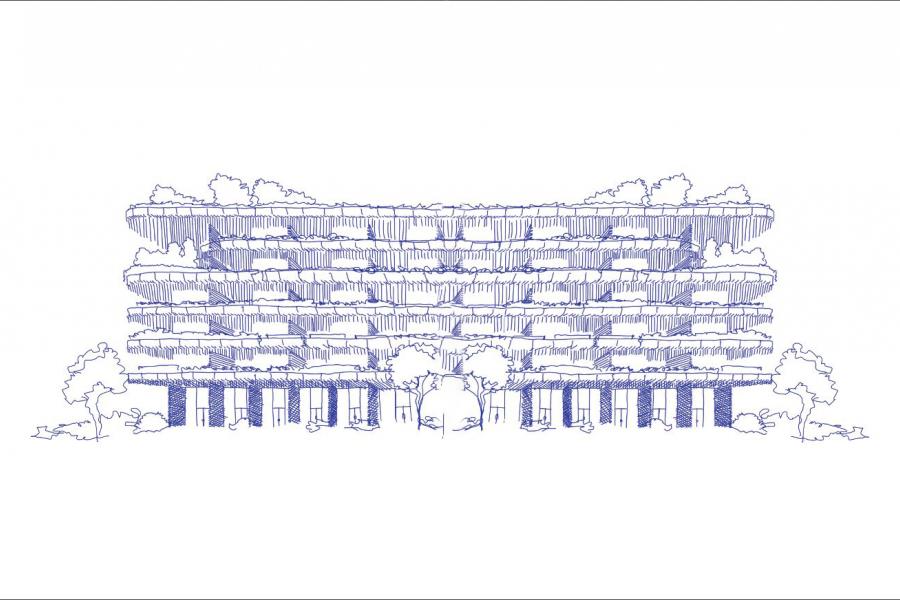

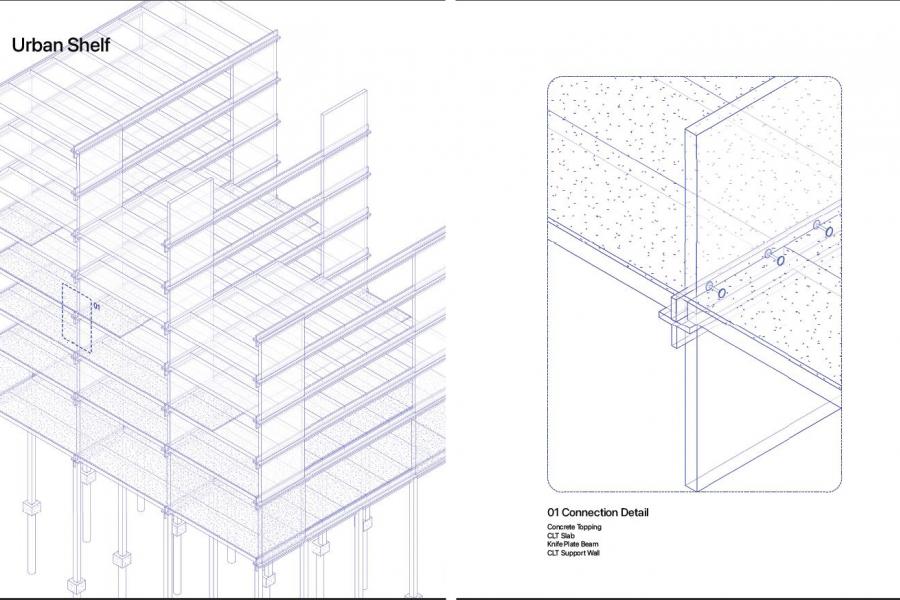
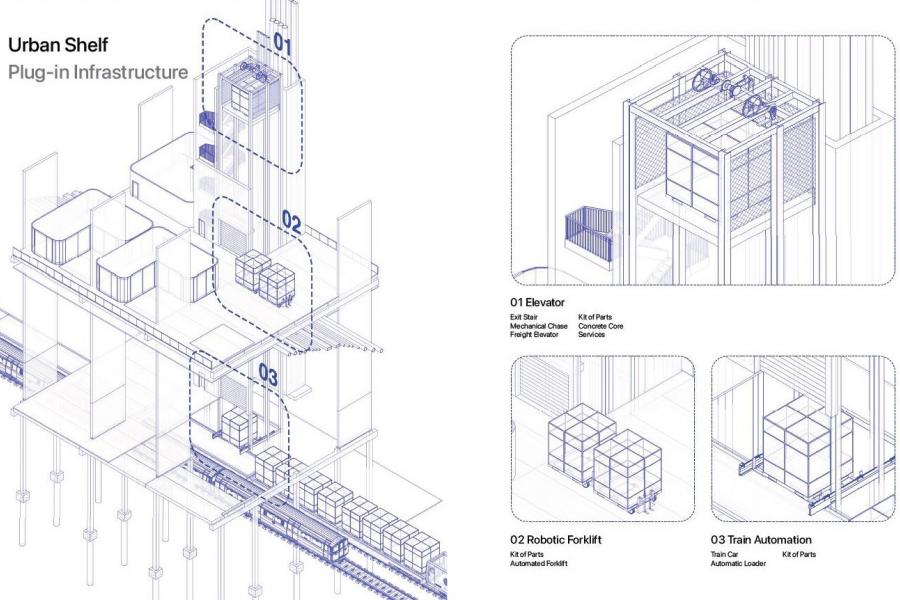
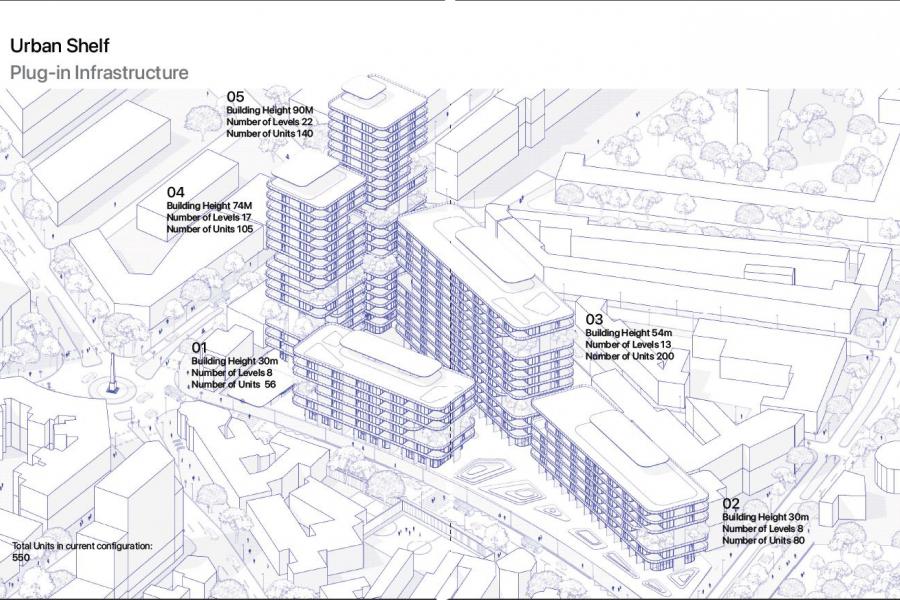
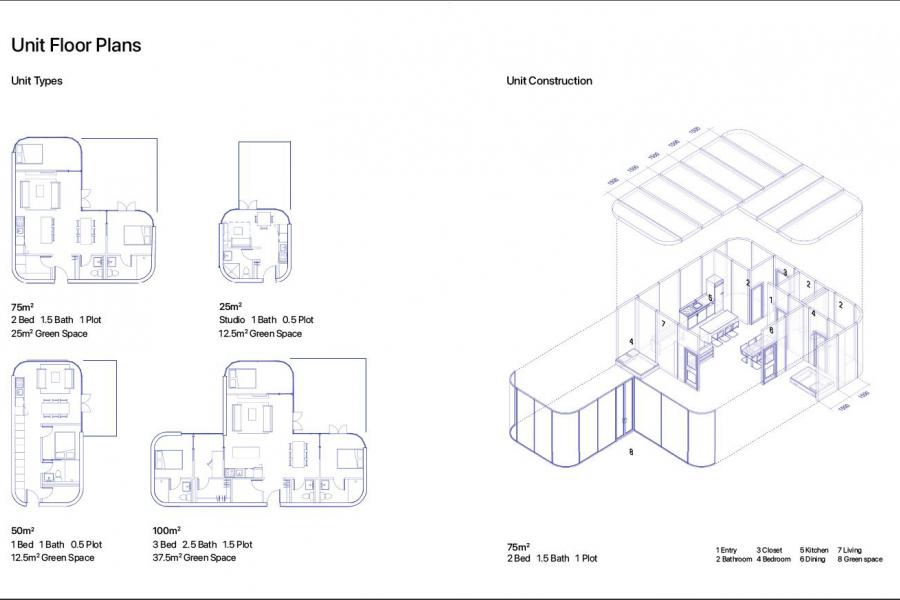
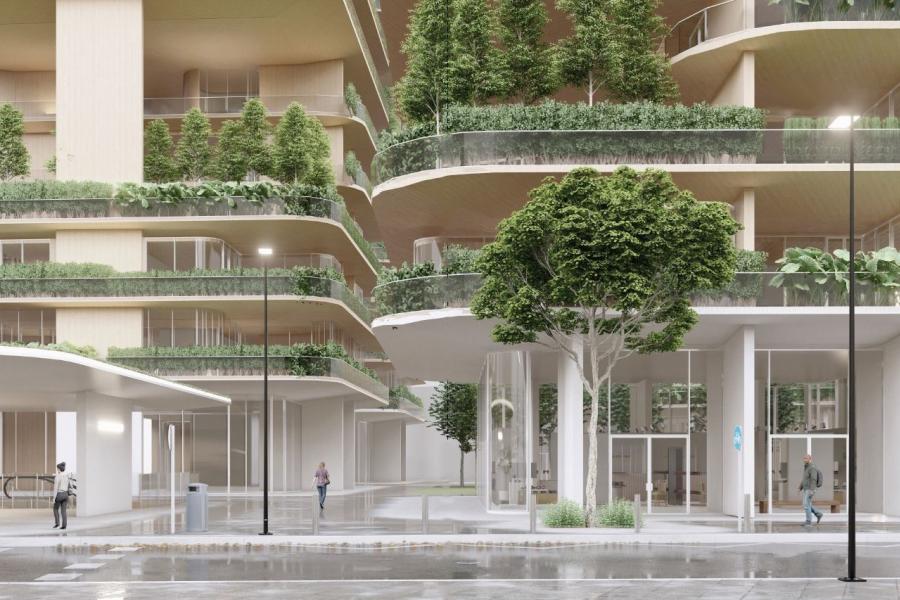

The City Future: The Assembly of People, Space and Architecture
The Assembly of People, Space and Architecture is a dynamic title, changing at each scale. Within this thesis three levels of the architectural future are dealt with; the wider metropolis, the architecture of the future and the organization of how humans live. These topics often interfere and become more inseparable as they should. To properly pave a new way forward for architecture is to re-examine the context, the people who inhabit the space and the architecture itself. The world is inherently connected in all kinds of ways, thus to think of architecture, transportation, economics, politics, access to nature, public infrastructure, private and public spaces as singular instances of design is to create a fragmented machine; one which has no knowledge or optimization. This thesis does not arrive as a Mono-solution to the problems we see today, but rather as a subtle redesign of daily life; designated for the near future. It to proposes sustainable hybrid solutions where freedom of choice is present. Design f the future must be democratic; it must house the many differences and caveats present in everyday life; it must do so by establishing clear principals which can adapt.
As housing becomes less affordable and less available; slums grow exponentially; commute times continue to increase; people are forced to live in smaller dwellings; and our connection to nature diminishes, major flaws in the current development of cities can be to blame. This thesis believes that a new holistic form of urban development and urban housing will emerge. This new architecture must balance the everyday needs, decisions and preferences whilst maintaining a cohesive architectural language and function. The future city is a redesign of the cities we already have, changes made with time and effort of the people who wish to live in them, govern them or invest in them. An architecture fit for this vision is one with an ideology focused on simplicity; hypermodern construction and sustainability; proportions; private and public realms: abundance of nature and most importantly equality.
The shelf is conceived as a shift in housing, one which promotes change, adaptability, and most importantly choice. Individual and community are hosted but never forced through architectural means. Although the units, not matter the scale, are made to look the same from the exterior, it is within the layouts, decor, planting and outdoor furniture which each individual person or family will express themselves. The Shelf is a host for many people, dwellings and economic situations. Too often buildings become categorized by their finishes, price points, and occupants, but with a set of clear guidelines and options the shelf is made available to anyone. Housing should be affordable and governments, private developers and tenants must work together to seek mutual benefits. The project sees its replication is many forms around the city of London connected via autonomous train delivery, in hopes of preventing stagnation and increasing user experience throughout their time with their home. Unlike the current state of homeownership or renting, the units are meant to serve as homes rather than commodities valued for their location or vistas.
